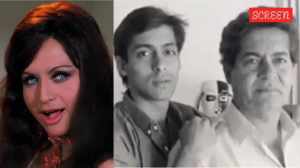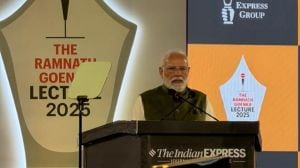Stay updated with the latest - Click here to follow us on Instagram
Unsung Heroes: Meet Anupama Hosakere, an engineer-turned-puppeteer who is keeping an ancient Indian artform alive
Before she began her own journey in the Indian arts, Hosakere, now an ICCR empanelled artist, already had an impressive series of academic achievements.
 Hosakere also opines that India has a heritage of puppetry and the arts unrivalled anywhere else, with the legacy of texts such as the Natya Shastra.
Hosakere also opines that India has a heritage of puppetry and the arts unrivalled anywhere else, with the legacy of texts such as the Natya Shastra. Across the country, many traditional art forms have suffered with the passage of time. But in Karnataka and across the world, the Dhaatu Puppet Theatre and its founder Anupama Hosakere are leading the charge for the preservation of the ancient techniques of puppetry.
Dhaatu today has made a considerable impact in the field of puppetry — with weekend classes, an art installation in the Bangalore Airport, as well as an annual event in January with puppeteers around the world coming to Bengaluru to exchange ideas.
Recently, Dhaatu also conducted a puppet musical play at the Bharatiya Vidya Bhavan. A glimpse into their work can also be seen on their YouTube channel, Dhaatu Videos, where a recording of a Vijayadasami special, Vijayanagara Vaibhava, combines songs, deftly handled hand-crafted puppets and dramatics that one might expect from a stage production of a more conventional form of theatre. Apart from their scheduled performances, Dhaatu also performs on invitation if they have free calendar space.
Before she began her own journey in the Indian arts, Hosakere, now an ICCR empanelled artist, already had an impressive series of academic achievements — a B.E and masters degree in electronics engineering, as well as masters degrees in communication and computer networks. Asked how this path led her to traditional puppetry, she says, “I’ve always been a storyteller and everything about India and its festivals have always intrigued me. This made me think about our culture and what we stand for. I was already exposed to it as a child, growing up in a traditional household in Basavanagudi.”
Dhaatu also has had a core of veterans behind it, including Hosakere’s family – Anupama’s daughters Divya and Prakruti, her husband Vidyashankar and long-time puppeteers Mythily Shikarpur and Chitra Rao.
However, Hosakere did not immediately start out by diving into puppetry but with classes in the 90s on Indian epics such as the Ramayana and the Mahabharata, with a perspective on performing arts. Remembering how puppetry came to be incorporated, she recalls, ” I used to live close to Disneyland in Anaheim when I was doing my Masters and there was a combination of engineering and art which I really admired…bringing visuals in also draws the mind in. Indian art is very layered and is not for any one age group.” Hosakere also felt a sense of responsibility, having been exposed to the arts, and wanting to pass them on to the next generation.
Her family’s traditional outlook also helped when she began to explore the arts. Hosakere explains, “The hesitation was more so when I was going into engineering! In Bangalore, traditional families are very broadminded. I learnt dance, music and painting as a child. It was a part of life.” Later, when she began to look for a visual element for the ongoing classes, she came across the art of Karnataka rod puppetry, which she learnt from veteran puppeteer M R Ranganath Rao. Hosakere started off with a production of Surpanakha in 1998, and formalised what Dhaatu would become in 2004, when it was registered as an organisation.
Puppetry has also had to make a space for itself in an era of tech-driven entertainment. Hosakere says, “We have to match it and offer a dimension which is alternate to the digital media.” Puppetry in Karnataka especially is a unique field — Hosakere says that it combines aspects of puppetry seen all over the country from string, rod, jointed, hand and shadow puppets. But it suffered greatly at the dawn of the 20th century, when a huge number of puppeteers lost their lives during the Spanish flu pandemic. She says, “It was a loss for the human race. Some puppets which we discovered were dumped in a Hanuman temple for thirty years and then put in a folklore museum.”
The breadth of what can be done with these puppets is remarkable. Hosakere says that plays have been done on the themes of Bhaskaracharya’s mathematical treatise, Lilavati, as well as HR issues in an industry. The revival of puppetry has also not been restricted to performances. Hosakere also carves the wooden dolls at a Banashankari workshop, where students also come to learn the art. While characters in common across plays can be reused, she has already carved a stunning 600 puppets.
It is not an easy path to walk, however, Hosakere points out, “The returns are not on par even with other art forms. That must change, and we are working towards it. It cannot happen in a day. Puppetry in particular is an expensive art form with many costs.” Even so, Dhaatu is attempting to take Indian puppetry to the world stage, with performances of Kalidasa’s Malavikagnimitram in the USA and classes on Karnataka puppetry in Paris, Nice, and Belgium, with other performances in Russia, China and Morocco. She recalls, “In Brussels, they told me it was the first time that puppetry was taught at a master’s level.”
Hosakere also opines that India has a heritage of puppetry and the arts unrivalled anywhere else, with the legacy of texts such as the Natya Shastra. And these stories are timeless as she says, “Puppetry is not just about slapstick, though that is an element that can be used. These are stories relatable to all, which delve into the human mind.”







